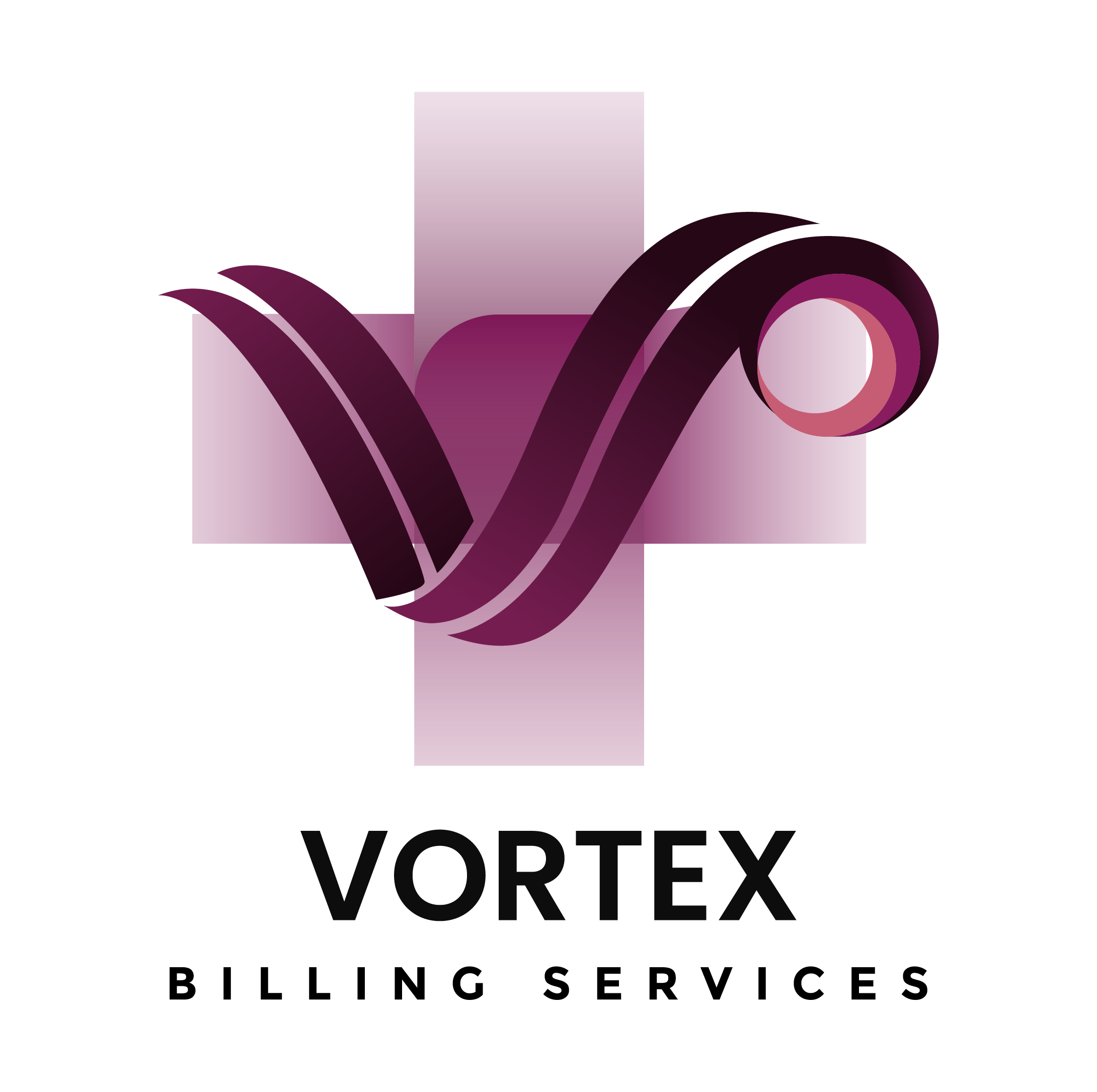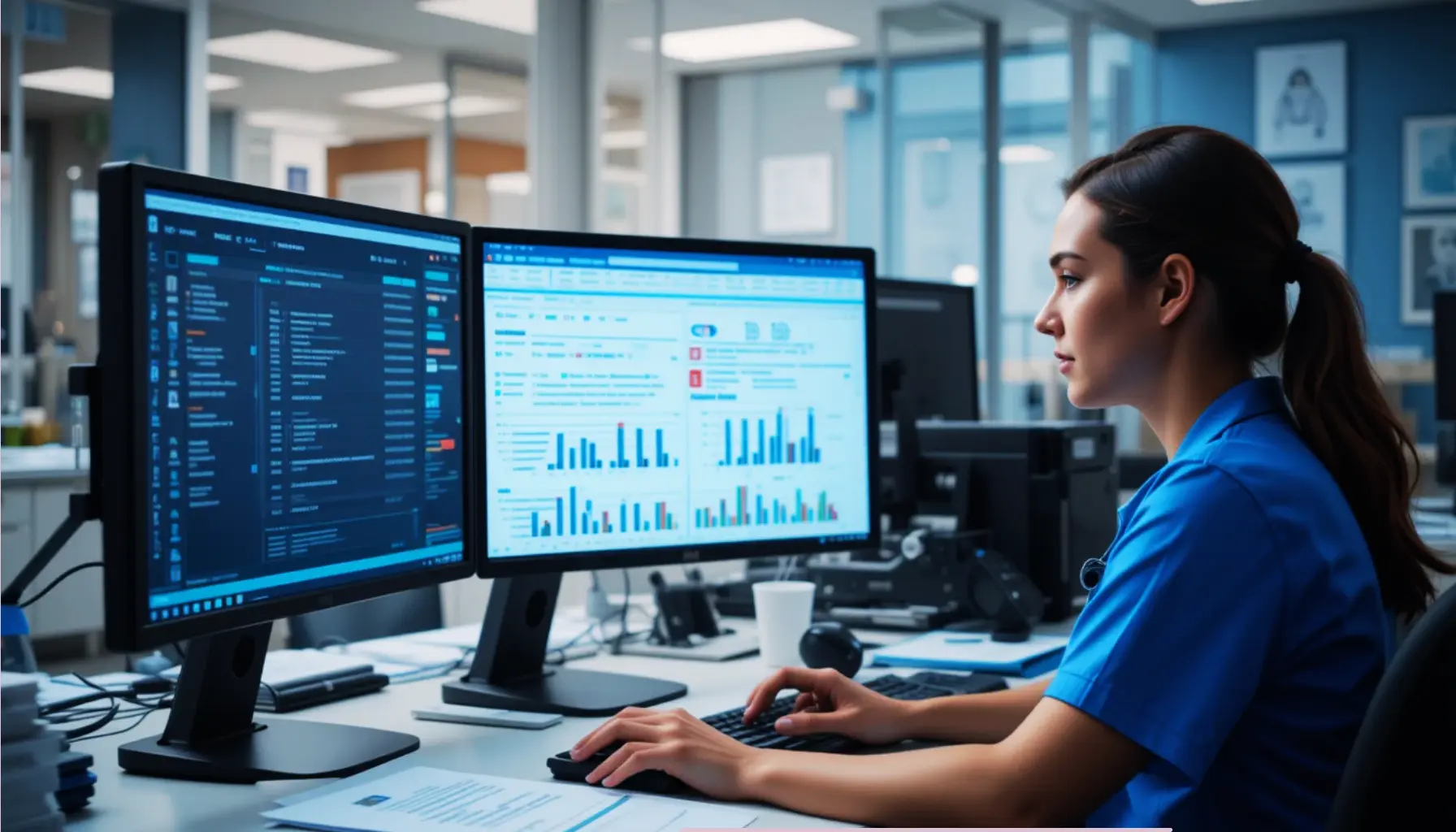Compliant RCM Workflows: A Core Focus for Healthcare Providers in 2025
The landscape of revenue cycle management (RCM) is evolving rapidly in 2025, and healthcare providers across the U.S. must stay ahead of these changes to thrive. From AI-driven billing automation to enhanced patient financial transparency, today’s RCM is about more than just collecting payments—it’s about building sustainable, compliant, and technology-powered workflows. Healthcare providers are no longer asking if they need to evolve their revenue cycle practices, but how fast they can adapt. If you’re a medical practice, clinic, or part of a growing healthcare network, the answer to what you need to know in 2025 is simple: leverage cutting-edge RCM trends to stay compliant, efficient, and financially healthy.
Introduction to Revenue Cycle Management (RCM)
What is Revenue Cycle Management?
Revenue Cycle Management is the backbone of a healthcare provider’s financial operations. It encompasses all administrative and clinical functions that contribute to the capture, management, and collection of patient service revenue. This includes everything from pre-authorization and coding to claim submission, payment posting, and patient collections.
In 2025, RCM is more than just a system; it’s an ecosystem. With increased complexity in insurance protocols, patient payment responsibility, and compliance regulations, a modern RCM strategy must be adaptive and smart. Healthcare providers rely on efficient RCM to avoid costly denials, reduce administrative burdens, and ensure a steady cash flow. In short, without a solid RCM system, healthcare operations can grind to a halt.
Why RCM Matters for Healthcare Providers in 2025
For healthcare providers, especially those operating in the highly competitive U.S. healthcare market, RCM is mission-critical. The pressure to reduce overhead while increasing patient satisfaction and maintaining compliance is immense. With patients becoming the third-largest payers in many systems, the margin for error in billing is razor-thin.
Here’s why RCM has become a top priority in 2025:
- Value-Based Care Models: Payment is increasingly tied to outcomes and patient satisfaction, not just services rendered.
- Patient Expectations: Consumers demand convenience and clarity in billing just like they do in retail.
- Regulatory Pressure: New HIPAA, CMS, and payer mandates require precise data handling and documentation.
- Tech Disruption: Legacy systems can’t keep up with AI-powered competitors.
This year, RCM isn’t just about fixing broken billing—it’s about reimagining revenue flow to match the future of healthcare.
The Shift Toward Automation in RCM
How AI and Machine Learning Are Revolutionizing RCM
Automation is no longer optional—it’s essential. In 2025, AI and machine learning are the engines behind smarter RCM systems. These tools automate time-consuming tasks like eligibility verification, coding, and claim scrubbing, significantly reducing the risk of human error.
AI systems can:
- Predict claim denials and suggest fixes before submission.
- Automatically match payments to claims and flag discrepancies.
- Analyze patterns in denied claims and offer suggestions to reduce future errors.
Healthcare providers benefit enormously from automation, with some reporting a 30–40% increase in revenue cycle efficiency within months of implementation. Machine learning algorithms get smarter over time, identifying trends and offering proactive insights that help practices avoid revenue leaks.
Benefits of RCM Automation for Medical Practices
Medical practices and clinics—especially small to mid-sized ones—often struggle with limited billing staff and mounting paperwork. Automated RCM platforms allow them to:
- Speed up collections: Faster verification, billing, and payment posting mean quicker cash flow.
- Improve accuracy: AI tools minimize coding errors and boost first-pass claim acceptance rates.
- Reduce administrative load: Free up staff to focus on patient care instead of chasing down payments.
- Enhance transparency: Digital tools give staff and patients real-time updates on billing and payment status.
For healthcare providers, embracing automation is like upgrading from a flip phone to a smartphone—it opens up a whole new level of capability and intelligence in daily operations.
Emphasis on Patient Financial Experience
Transparent Billing Practices
Today’s healthcare consumer expects the same clarity in billing as they would when shopping online. Unfortunately, medical bills often come with confusion, surprise charges, or vague explanations. In 2025, healthcare providers are recognizing that poor billing experiences lead to patient dissatisfaction and late payments.
To address this, RCM systems are now designed with transparency at their core. This includes:
- Upfront cost estimates: Patients want to know what they’ll owe before services are rendered.
- Clear itemization: Breaking down bills by procedure, provider, and payment responsibility.
- Easy-to-read invoices: Avoiding medical jargon and making terms simple to understand.
For healthcare providers, better billing transparency isn’t just good ethics—it’s good business. Patients are more likely to pay bills they understand. Practices using transparent billing practices report up to 20% improvement in patient payment rates.
Personalized Payment Plans and Digital Portals
With rising out-of-pocket costs, more patients are unable to pay their bills in full upfront. The solution? Flexible, patient-centric payment options.
Healthcare providers in 2025 are increasingly offering:
- Custom payment plans: Based on patient income or treatment type.
- Digital wallets and mobile pay: Letting patients settle bills with a few taps.
- Automated reminders: Friendly nudges via text or email to keep patients informed.
- Patient portals: Secure platforms where patients can view bills, ask questions, and make payments anytime.
These tools don’t just boost revenue—they strengthen trust and satisfaction. In fact, clinics that introduced personalized payment plans in the past year saw a 25% drop in overdue bills and a noticeable uptick in patient retention.
Compliance and Regulatory Updates in 2025
HIPAA Enhancements and What They Mean
Compliance is the foundation of any successful RCM operation, and in 2025, the stakes are higher than ever. HIPAA rules have expanded to include tighter controls on digital communications, patient data sharing, and third-party access to information.
For healthcare providers, this means:
- Encrypting all patient financial data.
- Ensuring third-party RCM vendors are compliant.
- Documenting every billing communication.
Failing to stay compliant can result in hefty fines and even litigation. That’s why many practices are turning to billing partners that guarantee HIPAA compliance out of the box—complete with audit trails and encrypted data environments.
CMS Policy Changes Impacting Billing
Medicare and Medicaid billing policies are also seeing significant shifts. CMS is pushing for:
- Increased interoperability: Systems must exchange data efficiently.
- Expanded telehealth reimbursement codes.
- Stricter guidelines on service documentation.
Staying compliant isn’t just about avoiding penalties—it’s about keeping revenue flowing. Healthcare providers that ignore policy changes risk delayed or denied reimbursements, which can devastate cash flow. Staying informed and aligned with CMS expectations is now a full-time responsibility, often requiring RCM partners who specialize in regulatory navigation.
Real-Time Analytics and Predictive Intelligence
Using Data to Improve Claim Success Rates
In 2025, data isn’t just power—it’s revenue. Advanced analytics tools now allow healthcare providers to predict, analyze, and adjust billing practices based on real-time performance data. These tools go beyond basic reports and dive deep into patterns, trends, and bottlenecks within the revenue cycle.
For instance, predictive analytics can:
- Highlight claims likely to be denied and recommend fixes.
- Identify recurring coding errors linked to specific procedures.
- Show payer-specific trends, like average time to reimbursement or denial rates.
- Track KPIs like Days in AR (Accounts Receivable), collection ratios, and clean claim rates.
By leveraging this kind of intelligence, healthcare providers can take a proactive approach rather than reacting to rejections after they happen. Practices that incorporate predictive analytics often see their claim denial rates decrease by 15% or more within the first six months.
In addition, real-time dashboards give administrators a visual, up-to-the-minute understanding of their financial performance. Whether you’re a solo practitioner or managing a large clinic network, these insights are essential to making fast, informed decisions.
Dashboards and Metrics for Smart Decision-Making
Static monthly reports are officially obsolete. The new standard in 2025 is dynamic, customizable dashboards that display actionable data. From front desk to back-office billing, every stakeholder can now access role-specific insights in real time.
What can you track?
- Claim Status: Monitor progress from submission to payment.
- Payer Performance: Know which insurers are slowing you down.
- Patient Collections: See who’s paid, who hasn’t, and why.
- Staff Productivity: Understand the output of your RCM and billing teams.
These dashboards don’t just inform—they empower. With a single glance, healthcare providers can decide whether to tweak a claim, contact a payer, or revise internal processes. This kind of responsiveness helps avoid financial blind spots and supports continuous optimization.
By investing in platforms that provide these advanced analytics, medical practices reduce waste, improve efficiency, and increase net collections—a win-win scenario that’s becoming the industry standard.
Integration of RCM with EHR and Practice Management Systems
Why Seamless Integration Matters in 2025
One of the biggest frustrations healthcare providers face is juggling multiple platforms that don’t talk to each other. It leads to redundant data entry, increased error risk, and a whole lot of wasted time.
That’s why seamless integration between Revenue Cycle Management (RCM), Electronic Health Records (EHR), and Practice Management Systems is a must in 2025.
Here’s what seamless integration looks like:
- Patient demographics entered in the EHR auto-populate billing systems.
- Medical coding linked directly to documented procedures.
- Real-time eligibility verification within the same interface.
- Auto-updates when payments are posted or claims are denied.
Integrated systems reduce the need for human intervention at each step, which minimizes errors and accelerates the revenue cycle. Practices that adopted full RCM-EHR integration report a 25–40% reduction in claim resubmissions and denials.
Top Benefits for Healthcare Providers
Beyond just convenience, integration improves clinical and financial outcomes for healthcare providers. Here’s how:
- Speed: Faster claims processing and fewer delays.
- Accuracy: Reduced data entry errors.
- Transparency: Everyone—from billing staff to clinicians—sees the same up-to-date information.
- Efficiency: Fewer clicks, fewer platforms, more time for patient care.
As more providers look to scale, reduce costs, and improve service, an integrated tech stack becomes not just helpful—but essential. Choosing an RCM solution that plugs seamlessly into your EHR and PM systems is one of the smartest moves you can make in 2025.
Outsourcing RCM to Specialized Partners
Why Outsourcing is Growing Among Healthcare Providers
Managing RCM in-house can be time-consuming, expensive, and error-prone—especially for small to mid-size practices. In 2025, a growing number of healthcare providers are choosing to outsource their RCM to specialized medical billing and RCM companies.
These partners offer:
- Certified medical coders and billers with deep industry knowledge.
- Compliance experts to keep your practice aligned with HIPAA and CMS rules.
- 24/7 claim tracking and support.
- Scalable services that grow with your practice.
By outsourcing, providers can reallocate staff time, reduce administrative costs, and improve billing outcomes—without the headaches of hiring, training, or managing billing teams.
Choosing the Right RCM Partner in 2025
Not all RCM vendors are created equal. If you’re considering outsourcing, it’s critical to vet potential partners thoroughly. Here’s what healthcare providers should look for:
- Compliance Assurance: Are they HIPAA-certified and regularly audited?
- Tech Integration: Do they offer seamless integration with your EHR and PM systems?
- Transparency: Will they provide regular reporting and access to real-time data?
- Customer Support: Is help available when you need it?
Most importantly, choose a provider that aligns with your values—whether you prioritize cost-efficiency, advanced analytics, or a white-glove patient experience. In the U.S. healthcare market, transparent and compliant RCM partners with tech-driven solutions are setting the gold standard for outsourced billing.
Cybersecurity in RCM: Safeguarding Sensitive Data
The Rise in Ransomware and Data Breaches
As healthcare becomes more digitized, the risk of cyberattacks has skyrocketed. In 2025, healthcare providers are among the top targets for ransomware and phishing schemes, largely because of the valuable patient and financial data they hold. Revenue Cycle Management systems are prime targets due to the sheer volume of sensitive information they process—insurance data, social security numbers, medical histories, and payment records.
Recent statistics show that healthcare data breaches cost providers an average of $11 million per incident. The consequences? Financial penalties, reputational damage, and most critically, loss of patient trust.
Cybercriminals are getting smarter, and traditional security measures are no longer enough. That’s why advanced cybersecurity protocols are now integral to modern RCM systems.
Cybersecurity Best Practices for Healthcare Providers
To combat these threats, healthcare providers must implement robust cybersecurity practices that protect both the RCM process and patient data. These include:
- Data Encryption: End-to-end encryption for all financial and personal information.
- Multi-Factor Authentication (MFA): Adding an extra layer of protection for system access.
- Regular Security Audits: Frequent checks to ensure all systems are up-to-date and breach-free.
- Employee Training: Educating staff on how to recognize phishing attempts and handle data securely.
- Cloud-Based Security: Partnering with RCM providers who use secure, HIPAA-compliant cloud platforms.
Forward-thinking providers are even implementing AI-based threat detection systems that monitor and neutralize potential breaches in real time. In 2025, cybersecurity isn’t just IT’s problem—it’s a boardroom priority for every healthcare organization that manages revenue digitally.
RCM Trends for Expanding and Multi-Location Practices
Scalable Systems for Growing Networks
As more healthcare practices expand to multiple locations or open new service lines, the complexity of managing RCM multiplies. Manual billing systems or outdated software simply can’t keep up with multi-site operations.
That’s why scalable RCM solutions are one of the biggest trends in 2025. These platforms are designed to support:
- Centralized billing operations across locations
- Multi-tax ID or multi-NPI structures
- Custom workflows by specialty or region
- Integrated scheduling and billing systems
With centralized dashboards and automation, healthcare providers running multiple clinics can standardize processes, reduce duplication, and maintain visibility across all operations. The result? Faster reimbursements, less overhead, and fewer billing headaches.
Centralized Billing and Unified Reporting
One of the biggest advantages of scalable RCM platforms is unified reporting. Instead of generating separate reports for each location, these systems provide holistic views of:
- Overall financial performance
- Payer trends by region
- Staff productivity by clinic
- Revenue leakage sources
Healthcare providers managing multiple practices are using these tools to benchmark performance, share best practices, and make data-driven growth decisions. It’s a trend that supports not just billing accuracy, but long-term strategic planning.
Cost Transparency and Patient Education
The Push for Consumer-Friendly Pricing Models
The healthcare industry has long been criticized for its opaque pricing structures. In response, 2025 is seeing a major shift toward cost transparency, with healthcare providers required (and encouraged) to give patients clear, upfront pricing information.
RCM tools now integrate with pricing transparency calculators that estimate patient responsibility based on real-time insurance data. Providers can generate cost estimates during scheduling or check-in, helping patients budget for care and reducing sticker shock later.
Educating Patients to Reduce Non-Payments
Cost transparency goes hand-in-hand with education. Patients who understand their bills are far more likely to pay them on time. Providers are increasingly using their RCM platforms to:
- Offer online billing tutorials or FAQs.
- Provide explanations of benefits and insurance terms.
- Send pre-visit estimates with easy-to-understand breakdowns.
- Include bill explanation videos within digital portals.
The ROI is clear: better education leads to faster payments, fewer disputes, and improved satisfaction scores. In 2025, healthcare providers who invest in patient education as part of their RCM strategy are reaping significant rewards—both financially and reputationally.
RCM for Technology-Oriented Practices
Adopting AI-Powered Virtual Assistants
Tech-savvy practices are leveraging AI-driven virtual assistants to streamline the patient and provider experience. These assistants can:
- Answer billing questions instantly via chatbots
- Schedule appointments with payment estimate confirmations
- Notify patients about claim statuses and remaining balances
For healthcare providers, these AI tools reduce call center volume and improve patient experience—especially among younger, tech-native demographics.
Mobile-First Billing Experiences
In 2025, mobile billing is no longer a luxury—it’s expected. Healthcare providers who offer mobile-first solutions allow patients to:
- View and pay bills via smartphone
- Access insurance explanations and copay summaries
- Receive text reminders for unpaid balances
- Set up auto-pay plans with just a few taps
Tech-forward practices are seeing a dramatic uptick in payment speed and patient satisfaction simply by meeting people where they are: on their phones.
Conclusion: Future-Proofing RCM for Healthcare Providers in 2025
The future of revenue cycle management is already here—and it’s dynamic, data-driven, and deeply patient-centered. For healthcare providers in the U.S., 2025 marks a shift from reactive billing to proactive, strategic RCM that embraces technology, transparency, and compliance.
Whether you’re a solo practitioner or part of a large healthcare network, the trends shaping RCM today will define your financial success tomorrow. By embracing automation, enhancing patient communication, ensuring compliance, and integrating smart technologies, healthcare providers can build a future-proof RCM infrastructure that supports both clinical excellence and financial health.
Now is the time to invest in systems and partners that evolve with your needs, scale with your growth, and secure your revenue—because in 2025 and beyond, your practice’s financial health depends on it.



